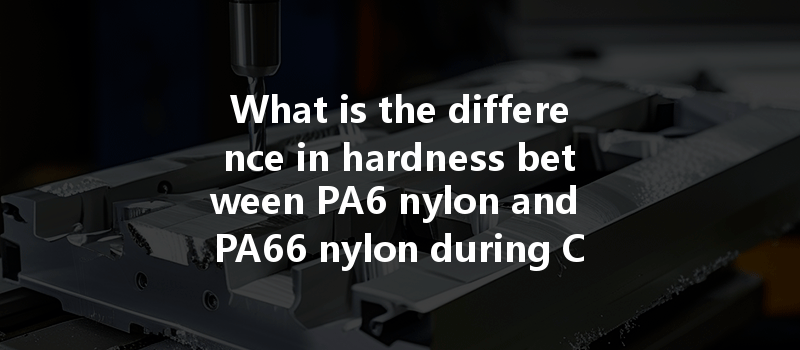Did you know that the hardness of materials can significantly affect the efficiency and quality of CNC machining? In fact, the World Economic Forum has reported that optimizing material properties can lead to up to a 20% increase in production efficiency. Among the many materials used in CNC machining, PA6 (Polyamide 6) and PA66 (Polyamide 66) nylon are some of the most common. But what is the difference in hardness between these two, and how does this affect their machining processes?
In this blog, we will delve into the characteristics of PA6 and PA66 nylons, highlighting their mechanical properties, particularly hardness. We will also explore practical solutions and methodologies that can be implemented during CNC machining to compensate for these differences and ensure optimal machining results. By the end of this extensive guide, you will have a comprehensive understanding of nylon hardness in CNC machining, practical insights into machining techniques, and how to enhance product quality and performance.
The Basics of Nylon: PA6 vs. PA66
Polyamides, commonly known as nylons, are synthetic polymers used in various applications due to their strength, durability, and thermal resistance. Both PA6 and PA66 are popular choices in the manufacturing industry, but they have distinct differences that are critical in the CNC machining process.
Properties Overview
The Significance of Hardness in CNC Machining
Understanding the difference in hardness between PA6 and PA66 is critical in CNC machining for several reasons:
Common CNC Machining Challenges with PA6 and PA66
Machining these materials can present unique challenges due to their properties. Let’s explore some common challenges faced when machining each type and how to address them.
Challenge: The hardness of the nylon can affect the type of tooling required.
Solution: For machining PA6, standard carbide tools may suffice, but for PA66, it’s advisable to use high-speed steel (HSS) or polycrystalline diamond (PCD) tools. Always consult the tool manufacturer’s recommendations for specific material grades.
Challenge: Different hardness levels require corresponding adjustments in machining parameters.
Solution: For PA6, a higher feed rate can be used while maintaining moderate cutting speeds. In comparison, PA66 typically requires a slower feed rate with optimized cutting speeds to reduce heat generation, preventing material degradation.

Challenge: Both materials can experience thermal sensitivity, leading to changes in mechanical properties.
Solution: Implement flood cooling or mist lubrication systems during machining to control the temperature and minimize heat build-up, especially when machining PA66, which is more sensitive to thermal effects.
Challenge: Achieving a high surface finish can be tougher with harder materials.
Solution: Utilize sharp tools and a reduced feed rate to improve the surface finish. Implement a finishing pass at slower feed rates to achieve smoother surfaces. Polishing or secondary finishing treatments may be necessary for high-quality end products.
Solutions for Optimizing CNC Machining of PA6 and PA66
Following initial insights into challenges and differences in hardness, we can explore in-depth strategies to optimize CNC machining processes:
A. Pre-Machining Considerations
B. Planning and Programming
C. Tooling Strategies
D. Monitoring During Machining
E. Post-Machining Techniques
Understanding the differences in hardness between PA6 and PA66 nylon is not just an academic exercise; it directly influences the efficiency, quality, and cost-effectiveness of CNC machining processes. By applying the insights and techniques discussed in this blog, machinists can optimize their operations, manage tool wear, adjust machining parameters, and ultimately enhance the performance of their products.
Before embarking on your next CNC machining project, remember to evaluate your material selection carefully. The right choice can lead to significant improvements in product quality and operational efficiency. As you navigate through different materials, take the time to assess your approach and be ready to adapt your strategies based on the unique properties of PA6 and PA
By considering the hardness differences and employing best practices, you can ensure that your CNC machining processes not only meet but exceed expectations, helping secure your competitive edge in today’s fast-paced manufacturing landscape.






